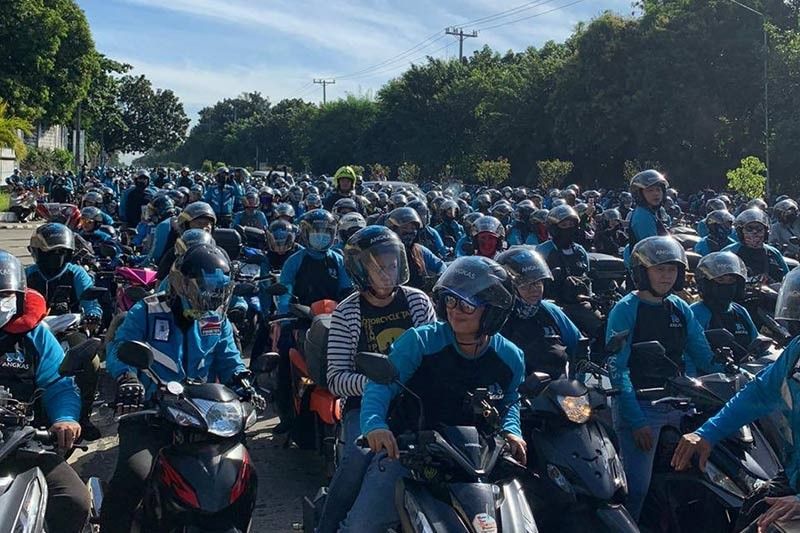Over 10,000 motorcycle taxi riders back on road Wednesday

MANILA, Philippines — Commuters returning home from office work in Metro Manila may book a ride through either Angkas or Joyride starting Wednesday after the government allowed the return of motorcycle taxis subject to health precautions.
In the meantime, 6,400 riders from Angkas and 4,000 from Joyride can immediately ply their routes from Tuesday after testing negative for coronavirus disease-2019 (COVID-19), Transport Assistant Secretary Goddes Hope Libiran said in a text message. In a statement, Angkas said its riders would resume operations the following day.
The balance of 16,600 drivers for Angkas and 11,000 for Joyride, which were all authorized to operate back, can take on passengers after taking a swab test. MoveIt, another firm, also expressed interest to return to business, but would still have to be assessed for public safety.
“There will be additional stricter health and safety protocols that need to be followed,” Libiran said in a Viber message. These include filling up health declaration forms, using your own helmet, and cashless payments.
For now, motorcycle hailing services can traverse roads until December 9, at which point players should have in place a mandatory insurance for both rider and passenger. The use of thermal scanners would also be required.
In an earlier briefing on Tuesday, presidential spokesperson Harry Roque also said that pregnant women, persons with disabilities, kids as well as people under the influence of drugs and alcohol are not allowed to back ride in motorcycle taxis.
Long time coming
A comeback for motorcycle ride-hailing firms on the road is a welcome reprieve from commuters struggling to report to work because of insufficient number of jeepneys and buses. This is because the government has limited their number over fears that permitting them to run as usual would trigger an exponential spread of coronavirus in typically crowded public transport.
While the economy has been reopened since June, allowing 58.2% of workers in the National Capital Region to report to work, estimates from no less than the National Economic and Development Authority showed that only 35.5% are able to do so because of public transport shortage.
Observers have denounced transport restrictions as useless in fighting COVID-19. “Let go of the ordinary transportation…Let people move around,” Mahar Mangahas, president of Social Weather Stations, a pollster tracking public sentiment during COVID-19, said in a forum on Monday.
To an extent, the latest decision from the transport agency marked another easing of movement limitations that economic managers pledged to do to revive an ailing economy. But it was also a long time coming to get here. Angkas, for instance, released as early as July motorcycle barrier prototypes meant to put space between the rider and passenger supposedly to avoid contagion, yet until now had been locked out of the road.
Easing restrictions
The struggle for motorcycle taxis is nothing new, however. The sector had been the subject of legal questions by the government that initially saw them as safety hazard. That changed due to public clamor, prompting a study of motorbike operations during which hailing firms will be allowed to operate pending legislation to ultimately govern the service.
That so-called “pilot” run would have ended last March 23, but the program was overtaken by lockdowns that suspended public transport early that month. The interagency task force for emerging infectious diseases, which acts as policymaking body during the health crisis, then revived that pilot last month, following Congress resolution.
“Basically, same scope, same coverage, same number of units and same players,” Libiran said.
Since the pilot is not meant to run indefinitely, Libiran also said that the final period when program will run will be determined by a technical working group (TWG) under the transport agency conducting the study on the new sector.
“The TWG still has to determine what data and information Congress needs for drafting a law, so the TWG can also gauge how long it is needed for the extended pilot study to run,” Libiran said.
- Latest
- Trending


























